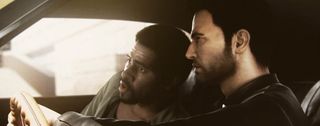
If you've never played the Driver series, you can easily convince everyone in the room you have with one sentence: “It was rubbish when I got out of the car.” When Driver – which pre-dated GTA3 – started mimicking the new market leader, it kind of lost its way. The series' real appeal was always in bounding over hills, smashing through boxes in alleys and watching the police slam into things as they tried to catch you.
Martin Edmondson, returning creative director from the first instalment, says that the new game will keep John Tanner firmly out of the fresh air. “Going further down that road would have put us on the back foot,” he says. “Focusing on the driving aspect, what we did so well in the first game, means we can do more interesting things.”
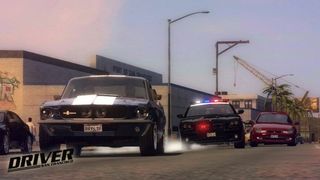
That they are. The big surprise when the new game was first revealed was that it basically takes place in a dream. Tanner is knocked unconscious by his Driver 3 nemesis, Charles Jericho, almost immediately, and the story then takes place in an imaginary version of San Francisco. Missions, tricks and side quests all earn Tanner willpower. On one level, this makes the city a metaphor for his brain. On a slightly more tangible level, it's an excuse to introduce willpower as the dream currency and XP system of Coma Frisco.
Being in a vegetative state gives Tanner one magical ability: he can Shift into the body of any driver in the city. This happens for the first time during an involuntary leap into an ambulance driver called Ray. Delivering the patient safely to hospital before his heartbeat counts down to zero squirts Tanner back into his regular body, and you only have to wait a couple of annoying minutes before he stops shouting, “What's happening, I'm Ray, this is crazy” and starts playing with the ability properly.

Earning willpower doesn't just let you buy cars, it also expands your overview of San Francisco, letting you zip from one side of the city to the other in seconds. It also unlocks Tanner Missions – plot-advancing objectives that get you close to the Jericho in your brain. On a side note: if Jericho represents an undiagnosed brain tumour, I will personally rip out our hard drives and hurl them into the sun.
Jumping into a car will often find you mid-conversation. “There are hundreds – hundreds – of these exchanges,” says Edmondson. “There are more lines of dialogue than in Mass Effect 2. It sounds like a cheesy thing, but playing it now, I'm hearing dialogue I'd forgotten, because it's been so long since I last heard it. We used every American-speaking actor in the UK, then went to LA to record more.”
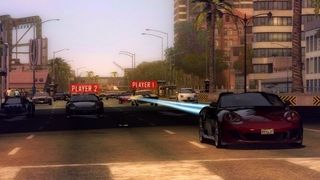
I climb into a number of cars that aren't explicitly marked for missions, and I find myself in lots of San Francisco's 'life bubbles'. It's an unusual level of detail; a system of creating depth in the city that's not actually deep, just incredibly wide. Along with the new, undisclosed multiplayer modes and splitscreen play for consoles, it explains what the devs have been doing for the last year.
The biggest gaming news, reviews and hardware deals
Keep up to date with the most important stories and the best deals, as picked by the PC Gamer team.
As well as possessing Ray the unsuspecting ambulance driver, the opening missions will have you dealing spontaneous and arbitrary justice on behalf of the citizens of the West Coast. You'll startle an obnoxious driving instructor by, yes, driving dangerously. You'll park a television broadcast vehicle and make other cars do stunts in front of it for the benefit of a cheap TV show. You'll also bully a 'jackass' into trading paint with the police, just to prove to your partner, Jones, that you're capable of these magic tricks.
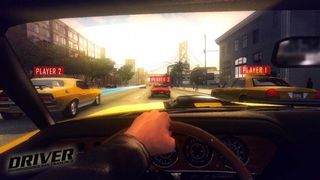
Yes, a lot of these missions do seem slightly divorced from powdered-snow heroism. But you'll have to forgive the game a slightly wonky moral compass; it's difficult to think of many ways in which Tanner's powers can be used for the unequivocal good. The missions are instead designed to take advantage of the Shift system, and over the course of the first hour, it pulls off a convincing tutorial in a way that's not subtle but is clever, varied and involving.
One more example: you're asked to use the vehicle transporters that roam San Francisco as ramps, and you have to do it three times in 45 seconds. If you've been slow to take advantage of Shift without being told to, this is the mission that forces you to use it as a simple puzzlesolving skill. Without it, it's impossible. Using the power, you simply ride the ramp, then swap to another car behind the transporter. Easy – it just asks you to think about Shift as a tool, not just a gimmick.
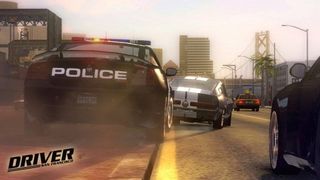
If I've got any concerns, it's that this level of interest will be difficult to keep pacey over the duration of a whole game. But apart from a couple of moments of entertainingly crap dialogue – and it's to the game's credit that it's an entertaining grade of crap, at least – the opening moments showing San Francisco are unexpectedly convincing. Colour me newly optimistic.
Most Popular

